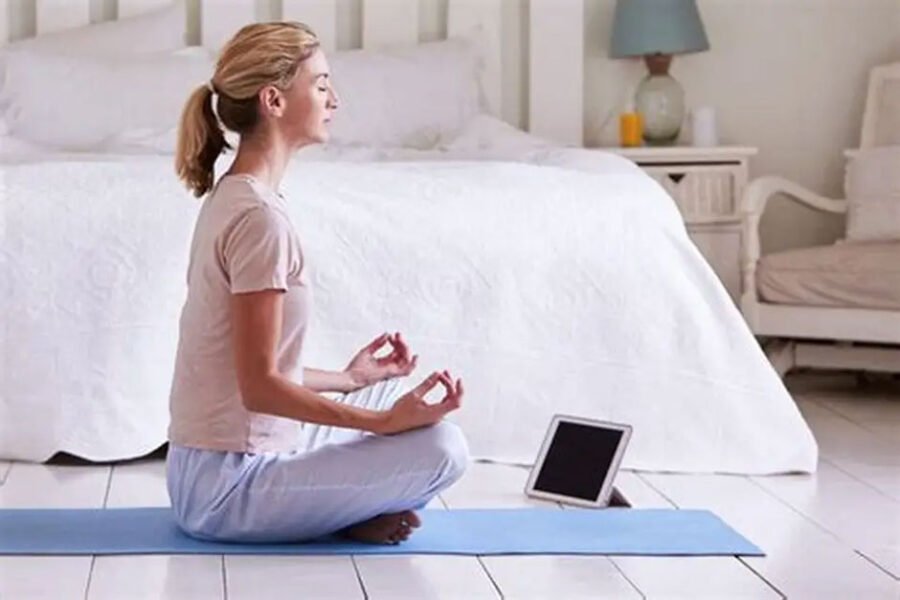Skip to the good bit
ToggleWe’re more plugged in than ever. The average person checks their phone about 96 times a day and logs hours of screen time without thinking. No surprise many of us feel scattered, anxious, or oddly “busy” without getting much done. The fix isn’t to ditch your devices. It’s to use them with intention, so tech serves your life, not the other way around.
What Mindful Tech Actually Means
Not all screen time is the same. Endless scrolling can drain you. But other tools like quick decision helpers (YesNoTarot), meditation apps, or digital journals can spark clarity and calm. The difference isn’t the phone in your hand. It’s the purpose behind the tap.
Mindful tech use is choosing why you open an app and how long you stay there.
Understanding Digital Overwhelm
Digital overwhelm happens when our tech use turns reactive. We grab the phone in quiet moments, chase every notification, or feel jittery when it’s out of reach. That tug on your attention breaks focus and presence.
Here’s a helpful reality check: Research from UC Irvine suggests it takes about 23 minutes to refocus after a digital interruption. With dozens of pings a day, shallow attention becomes the default—at work and at home.
It’s not just how long you’re online. It’s what you do there:
- Passive consumption (mindless feeds, autoplay videos) tends to leave you depleted.
- Active engagement (creating, connecting, reflecting) often feels energizing and meaningful.
The Brain Science Behind Digital Distraction
Our brains love novelty and unpredictable rewards. That’s why notifications, likes, and messages feel irresistible. They trigger dopamine in the same “maybe there’s a prize” way that gambling does.
Stanford psychiatrist Dr. Anna Lembke notes that constant stimulation can nudge the brain into a “dopamine deficit” state, making everyday pleasures feel flat. The result? More anxiety, lower mood, and scattered focus.
Knowing this isn’t meant to scare you. It’s empowering. When you see how platforms hook attention, you can set boundaries that put you back in charge.
The Four Principles of Mindful Tech
1) Intentional Engagement
Before you tap, ask: “What am I here to do?” That one question can stop autopilot scrolling.
2) Attention Protection
Guard your prime mental hours. Use focus modes. Silence non-essential alerts. Create phone-free zones at home (yes, the bedroom counts).
3) Quality Over Quantity
Curate your digital diet. Follow accounts that inform, inspire, or truly entertain you. Unfollow the rest.
4) Regular Resets
Short breaks help you reboot. Even a day or a weekend off certain apps can restore focus and presence.
Practical Strategies for Digital Balance
Bookend Your Day (Screen-Free)
Try a phone-free first 30 minutes in the morning, stretch, breathe, journal, or walk. End your day with a book, conversation, or reflection instead of doomscrolling.
Tame Notifications
Turn off everything that isn’t mission-critical. Use Do Not Disturb for deep work, family time, and sleep.
Choose Apps That Help You
Swap a time-waster for an app that builds a skill or supports reflection. Decision helpers like YesNoTarot, meditation apps, learning platforms, or digital journals can all be nudges toward clarity, when you use them on purpose, not on impulse.
Set Physical Boundaries
Charge your phone outside the bedroom. Eat meals without screens. Take walks tech-free. Small barriers create big habit shifts.
Bonus: A study published by the American Psychological Association found that people who paused social media for a week reported higher well-being and life satisfaction. Short breaks can make a real difference.
When Tech Supports Mindfulness
Used thoughtfully, tech can be a bridge to presence:
- Meditation Apps (Headspace, Calm) make practice simple and accessible.
- Digital Journals capture quick reflections and help you process emotions.
- Mindful Reminders prompt micro-pauses: breathe, stretch, check in.
- Connection Tools help maintain real relationships, especially across distance, when used with care.
The key: let tech enhance real life, not replace it.
Create Your Personal Digital Wellness Plan
Step 1: Audit Your Use
Check your screen-time stats. Which apps get the most minutes? Which ones leave you feeling better or worse?
Step 2: Reconnect to Values
What matters most right now, family, focus, health, creativity? Align your tech habits with those priorities.
Step 3: Start Small
Pick one change: phone-free meals, no screens after 9 p.m., or turning off one app’s alerts. Win small, then stack wins.
Step 4: Run Weekly Check-Ins
What worked? What slipped? Adjust with curiosity, not guilt.
The Future of Mindful Technology
Tech companies are slowly building healthier defaults: screen-time dashboards, focus modes, wellness nudges. Expect more tools that adapt to energy levels, help protect your attention, and encourage breaks. That’s progress, but your choices still matter most.
Bottom Line
Mindful tech use isn’t anti-tech. It’s pro-life. It’s about directing your attention toward what you value, deep work, real relationships, and a calmer mind.
Be the director of your digital experience:
- Choose tools that support your goals.
- Set boundaries that protect your focus.
- Reassess often as life shifts.
In a world that’s always on, the ability to pause, notice, and choose might be the most important skill you build this year.







